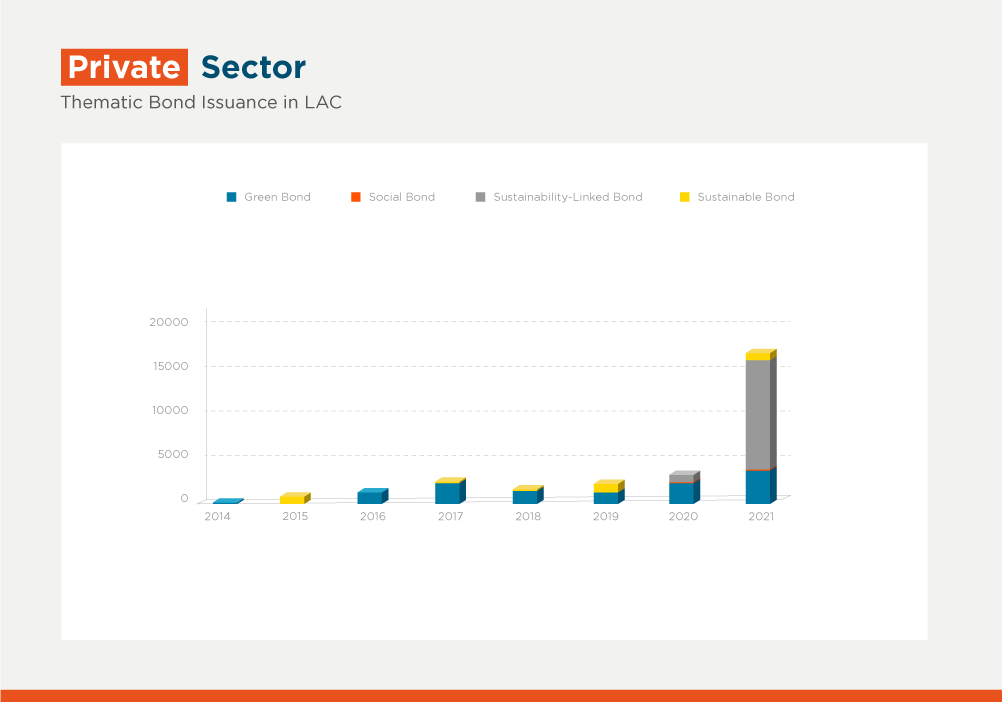Fighting Greenwashing & Other Risks in the Sustainability-Linked Bond Market

Sustainability-Linked Bonds, or SLBs, are a great way to support issuers sustainability strategy without earmarking the capital raised for specific goals. As this market matures, “green-washing” and other risks are being identified and dealt with by market participants.
Since the first green bond issuance in 2008, the labelled bond market has matured, with green, social and sustainability issuances galore. These are instruments in which the use of proceeds is predefined and applied to one or more specific green, social and/or sustainable project.
However, the market demanded more flexibility considering that some issuers did not have a particular pool of projects that met the requirements to be classified as such, nor met the minimum principal requirement for public issuances. Enter SLBs, defined by the International Capital Markets Association as “any type of bond instrument for which the financial and/or structural characteristics can vary depending on whether the issuer achieves predefined Sustainability/ESG objectives”.
By design, SLBs are forward-looking instruments where issuers predetermine sustainability-performance targets and key performance indicators to measure against over time, including financial penalties in case the targets are not met after some pre-agreed timing. In the vast majority of publicly placed SLBs, the securities’ yield is the structural feature that changes, with a step-up in the coupon of the bonds creating a financial incentive for management to pursue those goals.
Unlike the use-of-proceeds bonds (such as green, social, sustainable, gender, etc.), issuers of SLBs normally have no restrictions regarding the deployment of the funds raised, with the generic “general corporate purposes” (or “general budget purpose” in the case of sovereign issuers) bucket being common.
For this reason, SLBs are increasingly popular among issuers who appreciate the flexibility of use-of-proceeds. As a result, the SLB market has witnessed a strong expansion in recent years, reaching US$135 billion in outstanding securities in 2021, with an additional cumulative US$46.6 billion during the first half of 2022 according to the Climate Bond Initiative.

While an important tool to foster desired results, incentives can also bring unintended negative consequences if poorly crafted. As this market continues to mature, practitioners are progressively understanding these instruments, their benefits, risks, and rewards, as well as how they can be “gamed”.
To address potential shortcomings, the Emerging Markets Investors Alliance (“EMIA”) has published its second edition of the’ Enhanced Labeled Bond Principles to promote the development of labelled bonds and SLBs that can make a meaningful contribution towards improved environmental, social, and governance (ESG) outcomes in these instruments. Entities like IDB Invest also strive to incorporate in its investments market best practices and mitigants to address potential SLB shortcomings and establishing good benchmarks.
Beyond the well-known reputational risk of “green-washing” – the act of providing investors with misleading or outright false information about environmental impact of a company’s products or financial instruments – other points of attention for the integrity of the SLB market can be grouped in three main areas: (a) Insufficiently Robust and Ambitious Targets and KPIs; (b) Improperly Crafted Incentives; and (c) Structural Loopholes.
This is the first post of a series of two collaborations between IDB Invest and the Emerging Markets Investors Alliance. We will address those risks and possible mitigants in our next blogpost. Stay tuned!
LIKE WHAT YOU JUST READ?
Subscribe to our mailing list to stay informed on the latest IDB Invest news, blog posts, upcoming events, and to learn more about specific areas of interest.
Subscribe



